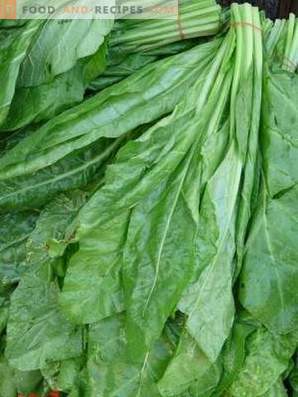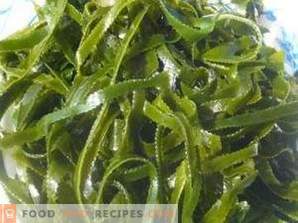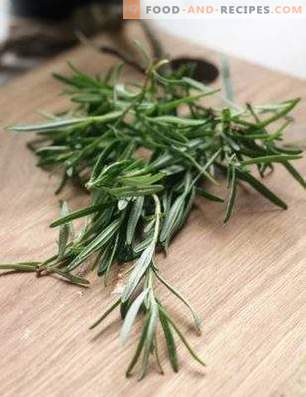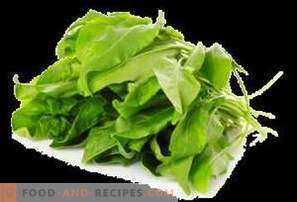
Sorrel is a herbaceous plant of the buckwheat family. The homeland of this vegetable crop has not yet been established: the range of its wild species covers all the fertile territories of the globe. However, there are facts indicating that this vegetable was first cultivated in Western Europe.
For a long time, sorrel was perceived as a weed plant. However, in the I-III centuries, the ancient Greek and Roman scientists (Dioscorides, Galen, and others) first spoke about its healing properties. For about 500 years, Western Europeans used oxalic leaves only as a hemostatic and digestive stimulating agent. However, in the 8th century, dishes from them began to be actively consumed.
In Eastern Europe, sorrel was recognized much later - in the XVII century. Greens of this plant began to be added to borscht, cabbage soup, soup, salads, pies and mashed potatoes. Today, many dishes based on sorrel leaves are considered traditional for Eastern European cuisine. In addition, decoctions and infusions of sorrel are still actively used in traditional medicine for the treatment of a variety of pathologies.
Botanical description
Sorrel is a perennial vegetable crop with a short taproot. Straight ribbed stem of the plant reaches 100 cm in height. Green basal leaves, sitting on long petioles and reaching 20 cm in length, are arrow-shaped (sometimes with a rounded tip). Stem leaf plates - oblong-ovoid, short-petiolate.
The June sorrel blossoms in small reddish or pale pink flowers, gathered in paniculate inflorescences at the top of the stem. The fruits of this vegetable culture are almost black triangular achene up to 2 mm long.
Nutritional value of sorrel
100 g of raw sorrel contains the following nutrients:
- proteins - 1, 988 g;
- fats - 0, 672 g;
- carbohydrates - 3, 184 g;
- fiber - 2, 879 g;
- water - 92, 844 g;
- ash - 1, 093 g.
In addition, the product is rich in organic acids. The concentration of these compounds - 0, 734 g per 100 g.
Vitamins in the composition of sorrel
Sorrel is an excellent source of vitamins. 100 g of this product contains:
- folic acid (B9) - 12, 848 μg;
- tocopherol equivalent (E) - 1, 994 mg;
- pantothenic acid (B5) - 0, 042 mg;
- phylloquinone (K) - 0, 602 mg;
- retinol equivalent (A) - 199, 587 µg;
- thiamine (B1) - 0, 039 mg;
- nicotinic acid (PP) - 0 477 mg;
- pyridoxine (B6) - 0, 119 mg;
- ascorbic acid (C) - 47, 612 mg;
- Riboflavin (B2) - 0, 093 mg.
The sorrel contains so-called vitamin H, biotin. 100 g of fresh green plants contains about 0.5 μg of this compound.
Useful elements in sorrel
Trace elements in 100 g of oxalic leaves:
- manganese - 0, 347 mg;
- iron - 2, 398 mg;
- copper - 130, 914 μg;
- zinc - 0, 193 mg;
- selenium - 0, 877 mkg.
Macro elements in 100 g of fresh sorrel:
- phosphorus - 62, 366 mg;
- calcium - 43, 581 mg;
- sodium - 3, 898 mg;
- potassium - 389, 714 mg;
- magnesium - 102, 166 mg.
Caloric content of sorrel leaves
100 g of fresh sorrel contains 21, 526 kcal. After cooking, the energy value of a 100-gram portion of this product is reduced to 20, 012 kcal. Calories of canned sorrel - 23, 012 kcal per 100 g
The benefits of sorrel
- Sorrel is an effective antiscorbutic. The greens of this plant helps to compensate for the deficiency of vitamins in the body, preventing the development of all forms of beriberi.
- The compounds contained in the juice of this vegetable culture, accelerate the processes of lipid, carbohydrate and protein metabolism.
- If raw oxalic leaves are eaten, the likelihood of disturbances in the digestive system is reduced.
- A decoction made from sorrel herb helps speed recovery from intestinal infections. On the day, drink 2 glasses of funds.
- Plant sap enhances appetite.
- To combat diarrhea, use a warm decoction of green plants. Drink drink at 1/5 cup per hour.
- Infusion of oxalic leaves has antiseptic, analgesic and anti-inflammatory properties. Therefore, they rinse the mouth and throat with moderate toothache, with stomatitis, sore throat, gingivitis, tracheitis, pharyngitis and laryngitis.
- Sorrel has a healing effect. Pounded leaves of this plant are applied to small, but not healing scratches, abrasions and burns.
- Substances contained in oxalic verdure contribute to the elimination of toxic compounds, poisons and other harmful substances from the body. In antiquity, this product was used to prepare antidotes for poisonous insects and snakes.
- The decoction of the leaves of the plant activates the excretory functions of the liver, contributing to the secretion of bile into the intestine. This drink is useful to people who have been diagnosed with diseases of the gallbladder and biliary tract.
- Sorrel is rich in substances that alleviate the unpleasant symptoms of menopause.
- A weak decoction prepared on the basis of oxalic leaves helps to get rid of the itchiness of the skin and the syphons caused by the development of allergic reactions.
- Folk healers use sorrel to treat infertility. A small handful of the leaves of this plant is poured with a liter of water, boiled for a minute and insisted until completely cooled. In the finished drink add a little mummy and knotweed. Means drink a glass a day, dividing the entire portion into 3 doses.
- The green of the plant contains a whole range of nutrients that strengthen the visual apparatus. Dishes from it help to increase visual acuity, reduce the load on the eyes during prolonged work with a computer or documents, prevent the development of ophthalmic diseases.
- A decoction prepared on the basis of roots and leaves of sorrel (1: 1) helps speed recovery from colds: relieves inflammation, eliminates a strong unproductive cough, restores hoarse voice.
- Fresh sap plants useful to rub the inflamed joints.
- An infusion of green sorrel is useful to drink a glass a day for a week before the onset of menstruation. The tool helps to eliminate pain, reduce the amount of secretions, calm the nervous system, improve sleep.
- In ancient times, oxalic sap was used to fight migraines. Means within half an hour rubbed the temporal region.
- Sorrel dishes help people suffering from tuberculosis to reduce the severity of symptoms of the disease.
- The green of the plant is rich in substances that increase the body's immune defense.
- Oxalic extracts help quench thirst and reduce fever during fever.
- Sorrel has anthelmintic properties. In order to get rid of parasites, it is enough to eat 5-7 leaves of this plant daily.
- Oxalal greens - a rich source of antioxidant compounds. Dishes from it help to improve the condition of the skin, slow down the aging of the body, reduce the likelihood of developing cancer.
- Broth based on sorrel has hemostatic properties. This drink is useful to drink with uterine, pulmonary and hemorrhoidal bleeding.
- For inflammatory diseases of the urinary system, 8-minute oxalic baths are taken every day. For their preparation, a pound of leaves of a plant is boiled in a liter of water for 10 minutes and left to brew for half an hour. Then the resulting liquid is drained and poured into a bath of water heated to a temperature of 37 degrees.
- There is a lot of potassium in sorrel leaves. Therefore, the dishes that contain this green, help prevent the formation of edema, strengthen the heart muscle.
- In alternative medicine, oxalic leaves infusion is used as a means of removing excess cholesterol from the body and improving the condition of people suffering from atherosclerosis. In addition, with his help correct blood pressure in hypertensive patients.
- Phenolic acids and flavonoids contained in sorrel strengthen the walls of capillaries and large vessels, thereby reducing the risk of developing cardiac pathologies.
- The substances present in the composition of sorrel stimulate the production of hemoglobin. Therefore, in case of anemia it is useful to include dishes from this vegetable in the menu at least once a week.
- Gathering from dried roots and leaves of sorrel (1: 1) helps speed recovery from rectal fissure and enterocolitis. A handful of vegetable mixture pour 4 cups of boiling water and boil for about 30 minutes. The finished composition is slightly insisted, filtered and brought to the original volume with warm water. On the day take 5 tbsp. spoons means.
- Sorrel contains a complex of nutrients that strengthen the nervous system. People who eat food at least 2 times a week with the addition of the leaves of this plant are better tolerated by stress, do an excellent job with psycho-emotional overloads, and are less depressed.
- Salads from oxalic leaves enhance physical endurance, reduce overall fatigue, help speed up recovery processes after injuries, serious stress, prolonged illness.
- Sorrel helps to cope with excessive sweating. For the preparation of therapeutic agent a teaspoon of juice of this plant is diluted in a glass of water. Drink drink a day in several receptions.
- Compounds that enter the human gastrointestinal tract through eating sorrel help to activate the brain, improve the ability to memorize new information.
Contraindications and harm to sorrel
- Sorrel is a potential allergen. Therefore, people who have already had episodes of food allergy to this product should exclude it from the diet.
- Sorrel leaves are contraindicated in gastritis, which arose against the background of an increase in the acidity of gastric juice.
- It is forbidden to eat sorrel with kidney and gallstones, gout, duodenal ulcer and stomach.
- Dishes from this vegetable culture are contraindicated during pregnancy.
- It has been proven that substances present in the chemical composition of sorrel interfere with calcium absorption. With the abuse of greens of this plant significantly increases the risk of osteoporosis and other diseases of bone tissue.











































